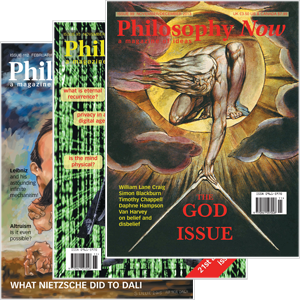
Your complimentary articles
You’ve read one of your four complimentary articles for this month.
You can read four articles free per month. To have complete access to the thousands of philosophy articles on this site, please
Philosophy Shorts
Philosophers on Dance
by Matt Qvortrup
‘More songs about Buildings and Food’ was the title of a 1978 album by the rock band Talking Heads. It was about all the things rock stars normally don’t sing about. Pop songs are usually about variations on the theme of love; tracks like Rose Royce’s 1976 hit ‘Car Wash’ are the exception.
Philosophers, likewise, tend to have a narrow focus on epistemology, metaphysics and trifles like the meaning of life. But occasionally great minds stray from their turf and write about other matters, for example buildings (Martin Heidegger), food (Hobbes), tomato juice (Robert Nozick), and the weather (Lucretius and Aristotle). This series of Shorts is about these unfamiliar themes; about the things philosophers also write about.
“Every day is wasted if you do not dance at least once.”
(F. Nietzsche, Thus Spoke Zarathustra, 1883)
Nietzsche might famously (or perhaps infamously?) have declared that ‘God is dead’, yet he wasn’t as dogmatic as you might have thought. At least, his thinking involved dancing. Indeed, he was willing to renounce his militant atheism on one condition: “I would… believe in a God who knew how to dance’, he admitted. Why was Nietzsche so obsessed with dancing? Perhaps because “Only in dance do I know how to speak parables of the highest things” (Zarathustra).
Søren Kierkegaard did not share Nietzsche’s perspective on life or philosophy. Yet in practice they were alike. Know to his compatriots in 1840s Copenhagen as ‘ dansemesteren’ – ‘the Master of Dance’ – the original existentialist philosopher would reportedly skip around Sortedam Dosering, the artificial lake then on the edge of town. Kierkegaard, like Nietzsche, believed that dance could “express something that other artforms could not”, as he put it in The Repetition (1843). In this oddest of books, he described a man who seems to resemble himself:
“No wealth of language, no passion of exclamation was sufficient for him, when no expression, no gesticulation satisfied, when nothing contented him except to break out with the strangest leaps and somersaults. Perhaps the same individual learned to dance, perhaps he often saw ballets and admired the art of the dancer.”
In any case, Kierkegaard hoped “always to be able to dance lightly in the service of thought” (Philosophical Fragments, 1844). For the Dane, dance was a recurrent metaphor for life; he opined that “most people live completely absorbed in the joys and sorrows of life; they are benchwarmers who do not take part in the dance” (Fear and Trembling, 1843).
Whether Plato liked to cut some rug is not known. It seems unlikely. He was a bit of a bore. The Athenian admitted that there were “movements of the body, which [are] described as ‘dancing in delight’”, but he was far from interested in the joy of this activity. Dance should not be banned and was to be tolerated on the mechanistic grounds that it would “result in a fine state of physical fitness.” (Laws, c.400 BCE).
Hannah Arendt, on the other hand, had more in common with Nietzsche and Kierkegaard – on the subject of dancing at least. For her, dancing was associated with freedom and she thought we must push through our inhibitions. As she explained, “to stop in the midst of the consummation means not completing… Anyone who wishes to dance the fandango and ceases in the midst of it from awkwardness or lack of strength, has not carried out an act of freedom” (Rahel Varnhagen: The Life of a Jewess, 1957).
So, keep dancing; for, as John Locke said: “Dancing is… what gives graceful motions to life” – especially, he went on, “the jiggering part” (Some Thoughts Concerning Education, 1693).
© Prof. Matt Qvortrup 2024
Matt Qvortrup’s book Great Minds on Small Things is published by Duckworth.









